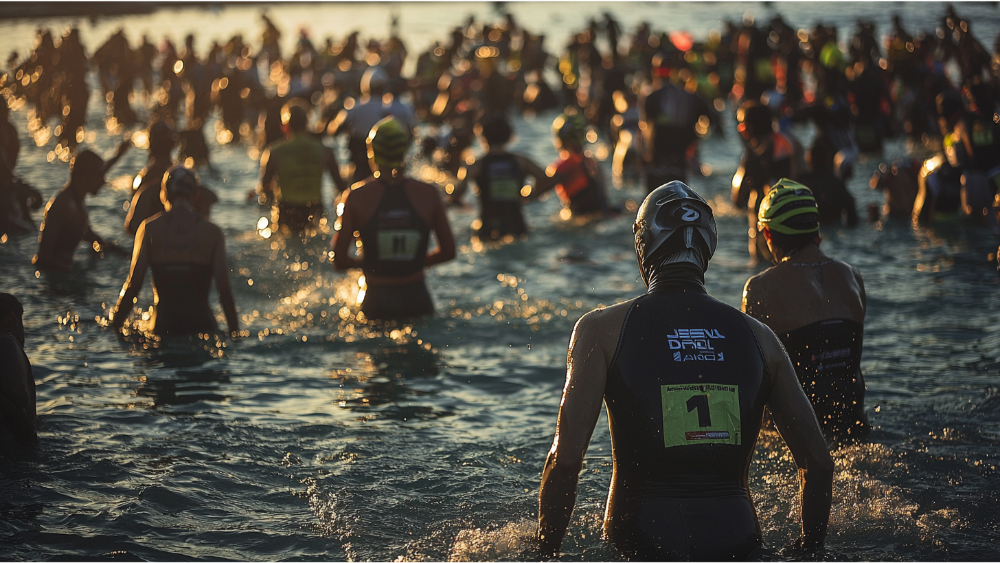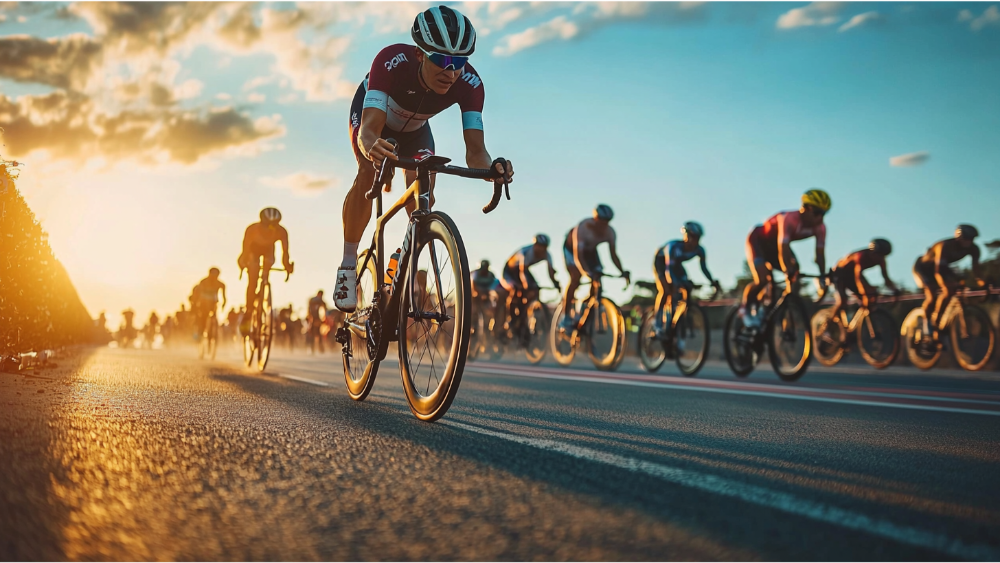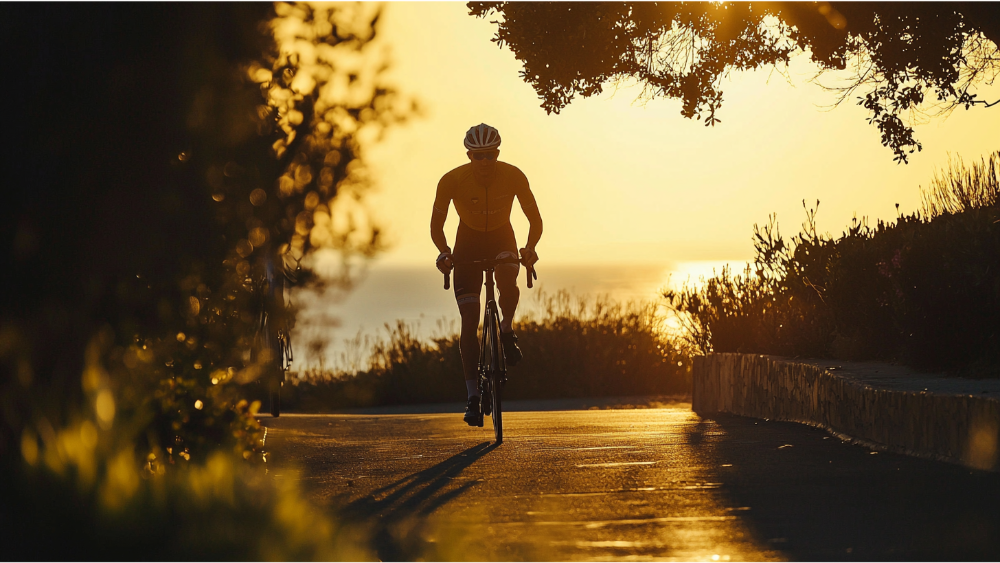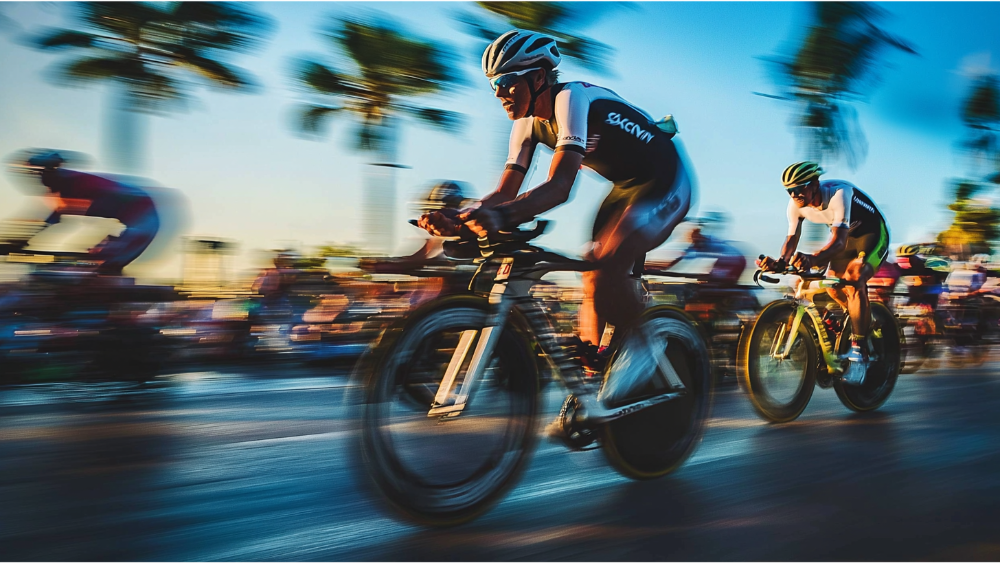The Ironman 70.3, often referred to as a Half Ironman, is one of the most popular endurance challenges in the world of triathlon. Combining a 1.2-mile swim, a 56-mile bike ride, and a 13.1-mile run, the total distance of the race adds up to 70.3 miles, which is where it gets its name. This race is seen as a more accessible alternative to the full Ironman (140.6 miles) but is still a massive feat of endurance that requires months of training and mental preparation.
Whether you’re a seasoned triathlete or new to the world of endurance sports, the Ironman 70.3 offers a challenge that tests both the body and the mind. In this article, we’ll break down what the Ironman 70.3 entails, explore the race’s history, and offer training tips to help you succeed.
Overview of the 70.3 Ironman Triathlon
The Ironman 70.3 includes three segments:
- Swim: A 1.2-mile (1.9 km) swim in open water, such as a lake, river, or ocean.
- Bike: A 56-mile (90 km) bike ride over varied terrain, often including both flat sections and hills.
- Run: A 13.1-mile (21.1 km) half marathon to finish the race.
This triathlon format is particularly appealing because it offers the perfect balance between endurance and speed. It’s long enough to demand serious training but short enough that athletes don’t have to dedicate their entire lives to preparation.
The Popularity of Ironman 70.3 Races
Ironman 70.3 races have skyrocketed in popularity in recent years. With over 100 races held worldwide, it has attracted a broader audience beyond just seasoned triathletes. This surge in interest can be attributed to several factors, including the increasing accessibility of triathlon gear, growing social media communities, and the allure of competing in a prestigious endurance event.
The Three Key Disciplines of the 70.3 Ironman

The 1.2-Mile Swim
The first discipline of the Ironman 70.3 is the swim. At 1.2 miles, it is always held in open water. This can present different challenges depending on whether it’s in a lake, ocean, or river. For example, sea swims often feature waves and currents, which can affect stroke efficiency and breathing. In comparison, lakes usually offer calmer conditions, but sighting can be more difficult without large landmarks.
Open Water Challenges
Open-water swimming is vastly different from pool swimming. Athletes must contend with waves, other competitors, and sometimes chilly temperatures. The key to success is practicing in open water whenever possible, honing skills like sighting (looking ahead while swimming to stay on course) and breathing bilaterally to handle waves from either side.
Swim Strategies for Success
Swim starts are typically chaotic. Mass starts, where everyone enters the water at the same time, can be overwhelming. An alternative is the rolling start, where athletes enter the water one at a time, making it more manageable for beginners.
The 56-Mile Bike Ride
The bike segment of an Ironman 70.3 is often the most time-consuming. The course can vary significantly in difficulty, with some featuring rolling hills, technical descents, and sharp climbs.
Nutrition and Hydration on the Bike
Success on the bike often depends on maintaining proper nutrition and hydration. Given that athletes spend several hours in the saddle, fueling with the right balance of carbohydrates, electrolytes, and fluids is essential. Most experts recommend consuming around 500–1,000 milliliters of water per hour, along with gels, bars, or energy drinks to keep energy levels stable.
Bike Leg Challenges
One of the major challenges during the bike leg is fatigue management. Athletes need to pace themselves to ensure they have enough energy left for the run. Additionally, windy conditions, technical courses, and elevation changes can all make the bike leg more challenging.
The 13.1-Mile Run
The final discipline is the half marathon. This is where mental toughness comes into play. After hours of swimming and cycling, the legs are fatigued, and maintaining a steady pace can be difficult.
Transitioning from Bike to Run (T2)
Transitioning from biking to running requires efficiency. This is known as T2, and it’s where athletes switch from their cycling shoes to running shoes and adjust their gear accordingly. Preparing in advance for T2 can save valuable time.
Endurance Running Techniques
Maintaining a steady pace is critical during the run. The body is fatigued from hours of exertion, and many athletes “hit the wall” during this segment. Strategies like breaking the run into smaller segments or walking aid stations can help make the distance more manageable.
Preparing for Your First 70.3 Ironman

Creating a Structured Training Plan
Training for a 70.3 Ironman requires a well-rounded plan that balances swim, bike, and run workouts. Each discipline demands its own type of preparation, with most athletes focusing on brick workouts—combinations of two disciplines, such as biking followed by running, to simulate race conditions.
Importance of Brick Workouts
Brick workouts help the body adjust to the unusual transition from biking to running. Running immediately after cycling can feel awkward at first, but practicing this in training helps athletes acclimate.
Setting Realistic Goals
Goal-setting is essential when preparing for a 70.3. Athletes should focus on realistic, incremental goals based on their fitness levels. These could be completing the race in a certain time, improving on a specific discipline, or simply finishing strong.
Tracking Your Progress
Tracking progress is important to ensure athletes are on target to meet their goals. This can be done through training logs, fitness apps, or wearable devices that monitor heart rate, pace, and mileage.
Common Mistakes to Avoid
One of the most common mistakes in 70.3 training is overtraining, which can lead to injury and burnout. It’s important to incorporate regular rest days into the training schedule to allow the body to recover.
The Importance of Rest and Recovery
Incorporating rest days into a training plan allows the muscles to recover and grow stronger. Recovery methods like stretching, yoga, and foam rolling can also help prevent injury.
Race Day Strategy

What to Expect on Race Day
Race day can be overwhelming, especially for first-timers. Proper pre-race nutrition and mental preparation are essential for a successful race. Athletes should practice visualization techniques and stick to a familiar routine.
Pre-Race Routine
The night before the race, athletes should carbo-load to ensure their glycogen stores are fully stocked. On the morning of the race, a light breakfast, such as oatmeal or a banana with peanut butter, provides a good energy base.
Managing Your Pacing Throughout the Race
Pacing is critical to avoid burning out early. Athletes should monitor their heart rate or use pace calculators to ensure they aren’t going too hard in the early stages of the race.
Dealing with Weather Conditions
Weather can play a significant role in the race. Hot temperatures require extra hydration, while cold conditions necessitate proper layering and possibly a wetsuit during the swim.
Iconic Ironman 70.3 Races Around the World
Popular Races in the USA
Some of the most iconic Ironman 70.3 races in the U.S. include Oceanside in California, known for its stunning coastal views, and Chattanooga in Tennessee, which offers a scenic course along the Tennessee River.
What Makes These Courses Unique?
Each race offers its own unique challenges. Oceanside’s swim in the Pacific Ocean can be choppy, while Chattanooga’s bike course includes rolling hills and beautiful river views.
International Destinations
For those looking to race abroad, Ironman 70.3 Marbella in Spain and Ironman 70.3 Taupo in New Zealand are renowned for their breathtaking scenery.
How to Choose the Right Course for You
When selecting a race, athletes should consider factors like course difficulty, travel logistics, and the type of environment they enjoy competing in. Beginners may want to choose flatter, more straightforward courses.
Tips from Experienced 70.3 Ironman Athletes

Lessons Learned from Top Finishers
Seasoned athletes often share valuable insights that can help first-timers avoid common pitfalls. These include nutrition strategies, pacing, and mental techniques to stay focused during the race.
Nutrition Plans That Worked
Top athletes emphasize the importance of consistent fueling throughout the race. A balanced combination of carbs, electrolytes, and hydration is key to maintaining energy levels.
Overcoming Mental Challenges
The mental component of a 70.3 is just as important as the physical one. Techniques like breaking the race into small, manageable sections and focusing on short-term goals (such as reaching the next aid station) can help athletes push through moments of doubt or fatigue.
Frequently Asked What is the 70.3 Ironman Questions
What is the Cutoff Time for 70.3 Ironman?
Each segment of the Ironman 70.3 race has a cutoff time, meaning athletes must finish each leg within a certain period to continue. Generally, athletes must complete the swim within 1 hour 10 minutes, the bike within 5 hours 30 minutes, and the run within 8 hours 30 minutes.
How Should I Train for My First 70.3?
Training for a 70.3 Ironman requires structured training over several months. New athletes should aim for a balance of swim, bike, and run workouts, including at least one brick workout per week. Additionally, it’s important to incorporate rest days to prevent overtraining.
What Gear Do I Need for a 70.3?
Essential gear includes a wetsuit for the swim, a road or triathlon bike, and running shoes. Many athletes also use clipless pedals and cycling shoes, along with tri-suits that can be worn for all three segments. Nutrition gels and electrolyte drinks are critical for maintaining energy levels.
Conclusion

The Ironman 70.3 is a physically demanding yet incredibly rewarding event that pushes athletes to their limits. From the initial swim to the final run, every aspect of the race requires thorough preparation, both mentally and physically. With the right training, strategy, and mindset, crossing the finish line of a 70.3 can be one of the most satisfying accomplishments in an athlete’s life.
Whether you’re aiming to qualify for the World Championships or just hoping to finish your first race, the journey to becoming a 70.3 finisher is one of hard work, dedication, and perseverance.

Leave a Reply